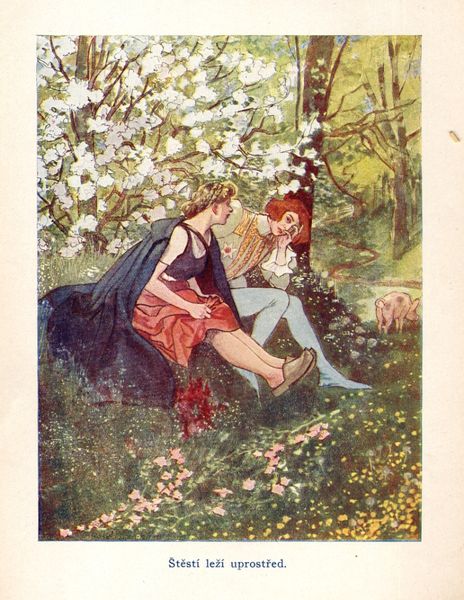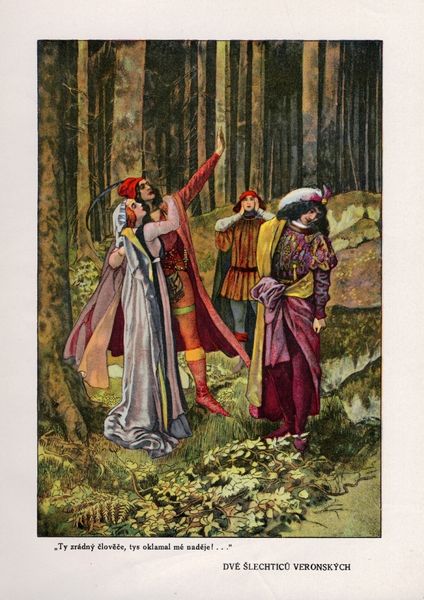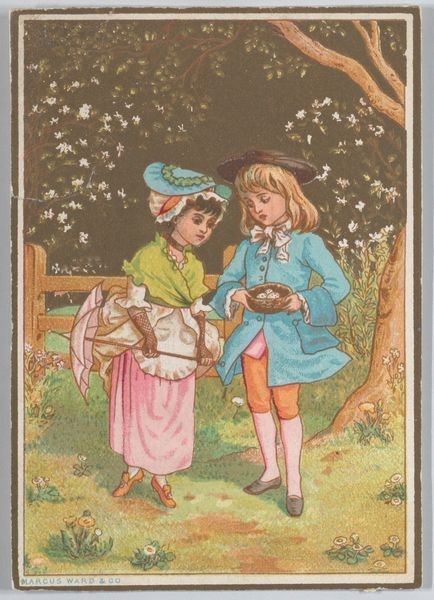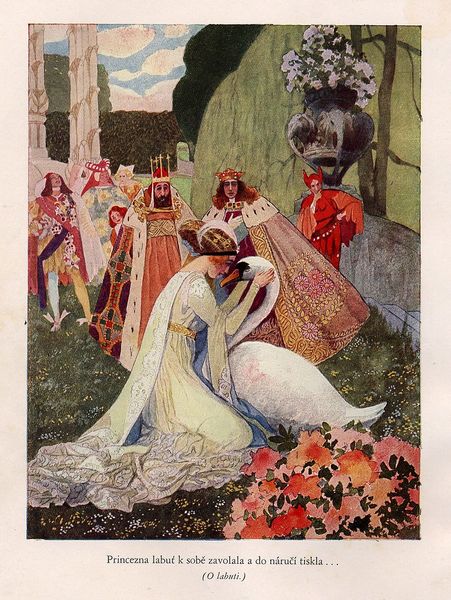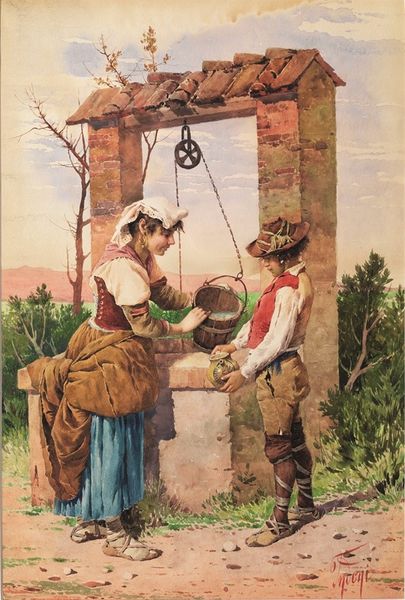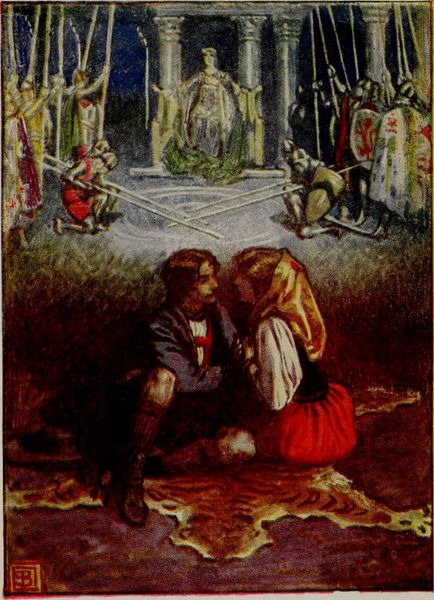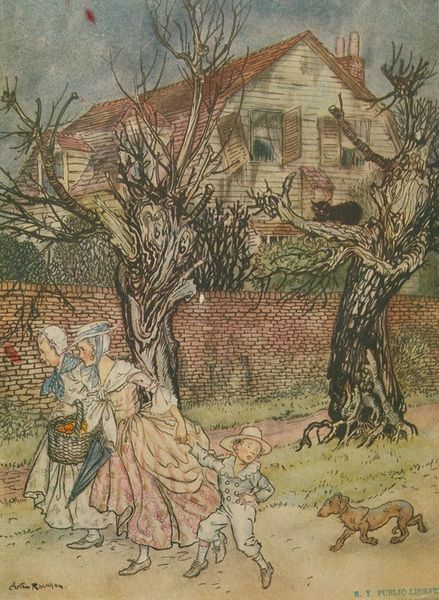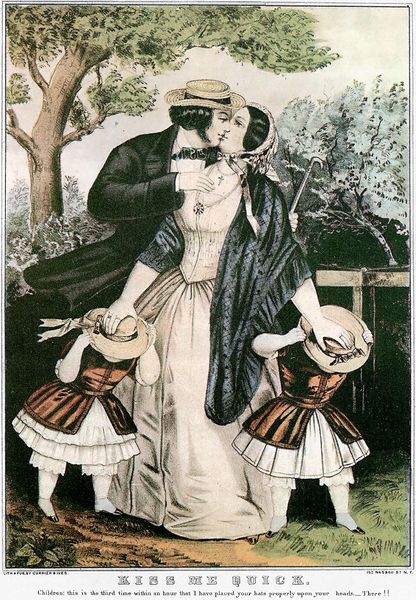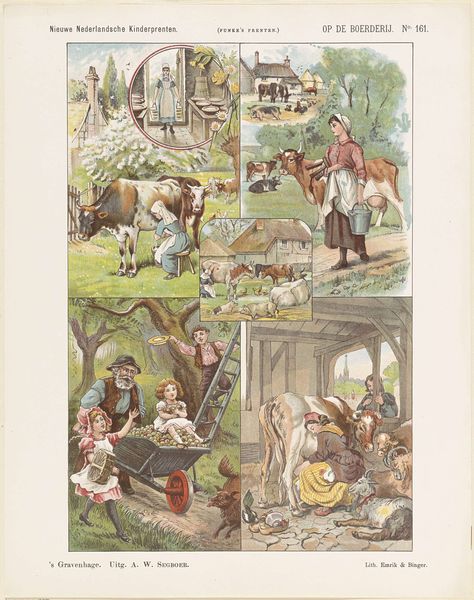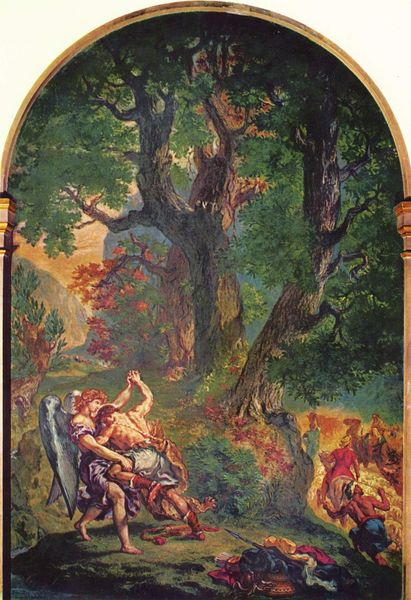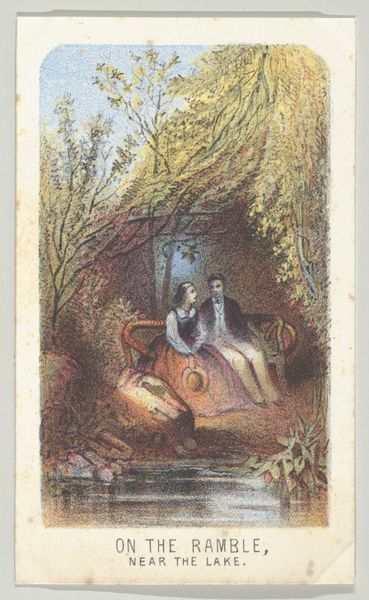
painting, watercolor
#
portrait
#
narrative-art
#
painting
#
watercolor
#
folk-art
#
romanticism
#
genre-painting
#
watercolor
Dimensions: 26.5 x 20.7 cm
Copyright: Public domain
Editor: This is Taras Shevchenko's "A Gypsy Fortune Teller," created in 1841 with watercolors. It feels staged, a constructed scene, not truly candid. What layers are at play here that I'm missing? Curator: Well, let’s consider the role of folk art and genre painting at that time. Shevchenko, even within the Romanticism movement, engaged with national identity. Do you notice anything about the power dynamics visually represented in the composition, or how cultural perception could influence the image? Editor: I see a young woman in what appears to be traditional Ukrainian clothing interacting with a Romani woman. There's a child on the Romani woman’s back. The light favors the Ukrainian woman; she stands near the bright doorway, while the Romani figures are in the shadows of the tree. Is the contrast symbolic of a social commentary? Curator: Precisely. Consider how imagery like this circulated and reinforced particular views. Fortune telling itself, and those associated with it, were often positioned as ‘other.’ So how might Shevchenko be using this scenario, consciously or unconsciously, to comment on cultural anxieties or prejudices of the time within the Tsarist Russian empire? Editor: So, the "folksy" narrative isn't just a charming scene; it's also about defining cultural boundaries, a visual statement about "us" and "them." That adds a level of discomfort that wasn’t apparent at first glance. Curator: Exactly! It forces us to question whose stories get told and how they're framed by dominant cultural perspectives. It gives a voice to social criticism. Editor: This really illuminates how art can function on many levels—not just aesthetically but also as a carrier of socio-political messages. Curator: Indeed. Recognizing these embedded meanings allows us to more critically engage with the past, but it also influences contemporary values.
Comments
No comments
Be the first to comment and join the conversation on the ultimate creative platform.
